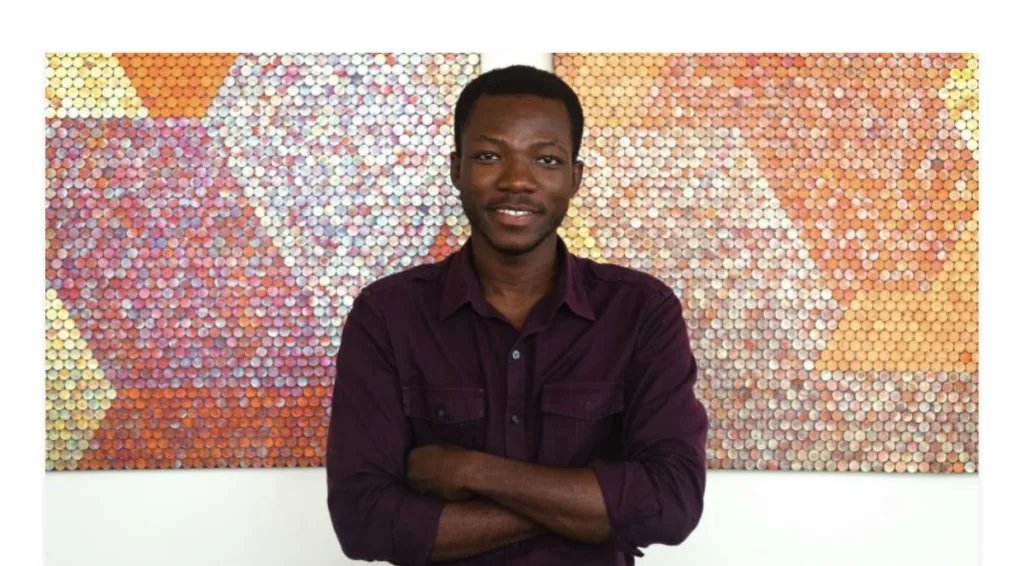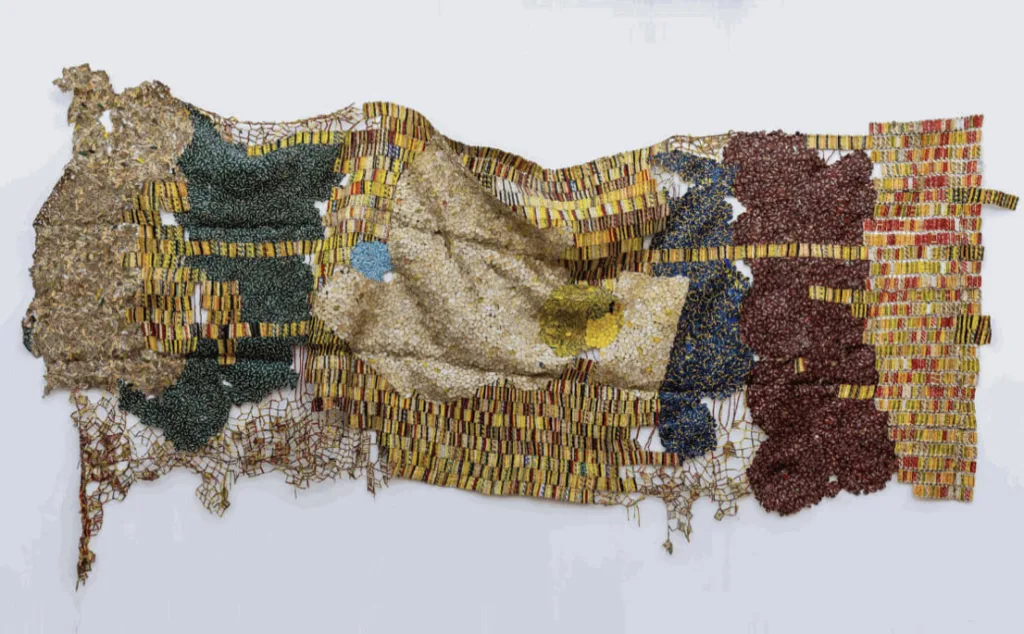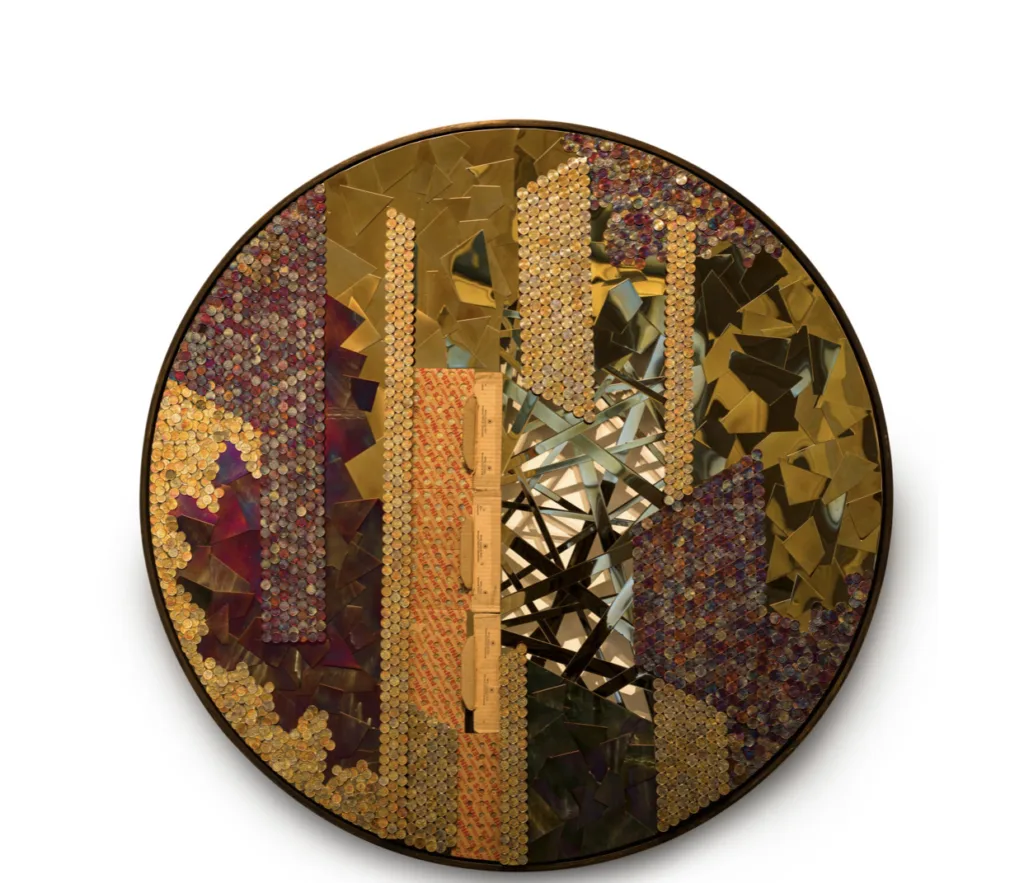Ghanaian born visual artist, Yaw Owusu creates sculptural installations by transforming ordinary everyday materials into art pieces of elevated value. These installations symbolise the influence of global production and finance on art objects of surpassing beauty.

At the beginning of his career, Owusu pursued a more conventional path in his artistic journey by creating portraits of political figures, popular culture, and royalty. During this phase, he was able to refine his technical abilities before eventually venturing into creating symbolic depictions of political and socio-economic themes which were of interest to him. His recent works delve into the shifting meanings of value in different areas such as the economic, ecological, and socio-historical spheres. Notably, Owusu’s choice of medium involves the use of pesewa coins, which were introduced in Ghana as a measure to combat rampant inflation in 2007. However, the persistent economic crisis has rendered these copper coins almost worthless. An important part of Owusu’s practice involves negotiating with the Central Bank of Ghana to get enough pesewas. Despite Ghana’s Central Bank’s insistence that the coins remain intact Owusu applies various chemical treatments to them. For example, he uses salt from the country’s southern coast or vinegar from the central and eastern regions to represent local industries, thereby exposing the ways in which currencies age and transform with usage. Through his use of pesawas, Owusu questions Ghana’s economic and political autonomy.

In his more recent works, Owusu broadens his exploration of global political and economic systems by incorporating a diverse range of materials. By utilizing the US penny as a medium, he examines its symbolic significance, particularly in relation to Abraham Lincoln, whose image appears on the coin, and the Transatlantic Slave Trade, of which Ghana played a pivotal role. His use of metals like steel serves as a nod to the seemingly unbreakable nature of US capitalism, particularly the industrial growth of New York City. However, the events of 9/11 and the cyclical nature of capitalism’s “boom and bust” cycles demonstrate the fragility of these structures, a dichotomy that he incorporates into his art.
Additionally, metals such as gold, copper, and bronze serve as a reminder of currencies that predate modern monetary systems, tracing the evolution of financial structures that continue to dominate contemporary life. Meanwhile, he incorporates natural materials like wood to represent the transition from a natural world to a manufactured one and highlight the precarious evolution of global economies. Through his sculptures, Owusu explores a range of questions, including how labor and its exploitation are central to the creation of economic value, how cartography reinforces colonial power structures worldwide, and how flags symbolize the false narrative of nation-states as beacons of security and prosperity for all.

Yaw Owusu obtained his BFA in Painting from Kwame Nkrumah University of Science and Technology in Ghana, and later earned his MFA from Pratt Institute in the USA. He has exhibited in various galleries across Ghana, the UK, and the USA, his artworks have also been featured in group exhibitions at prestigious galleries like Christie’s in the UK, Sotheby’s Institute in the USA, and MACAAL in Morocco. He was honored with the Kuenyehia Art Prize for Contemporary Ghanaian Art in 2018 and received the Pratt Institute’s Outstanding Student and Circle Awards in 2020. Additionally, he has held artist residencies at Efie Gallery in the UAE and Cope NYC in the USA.


